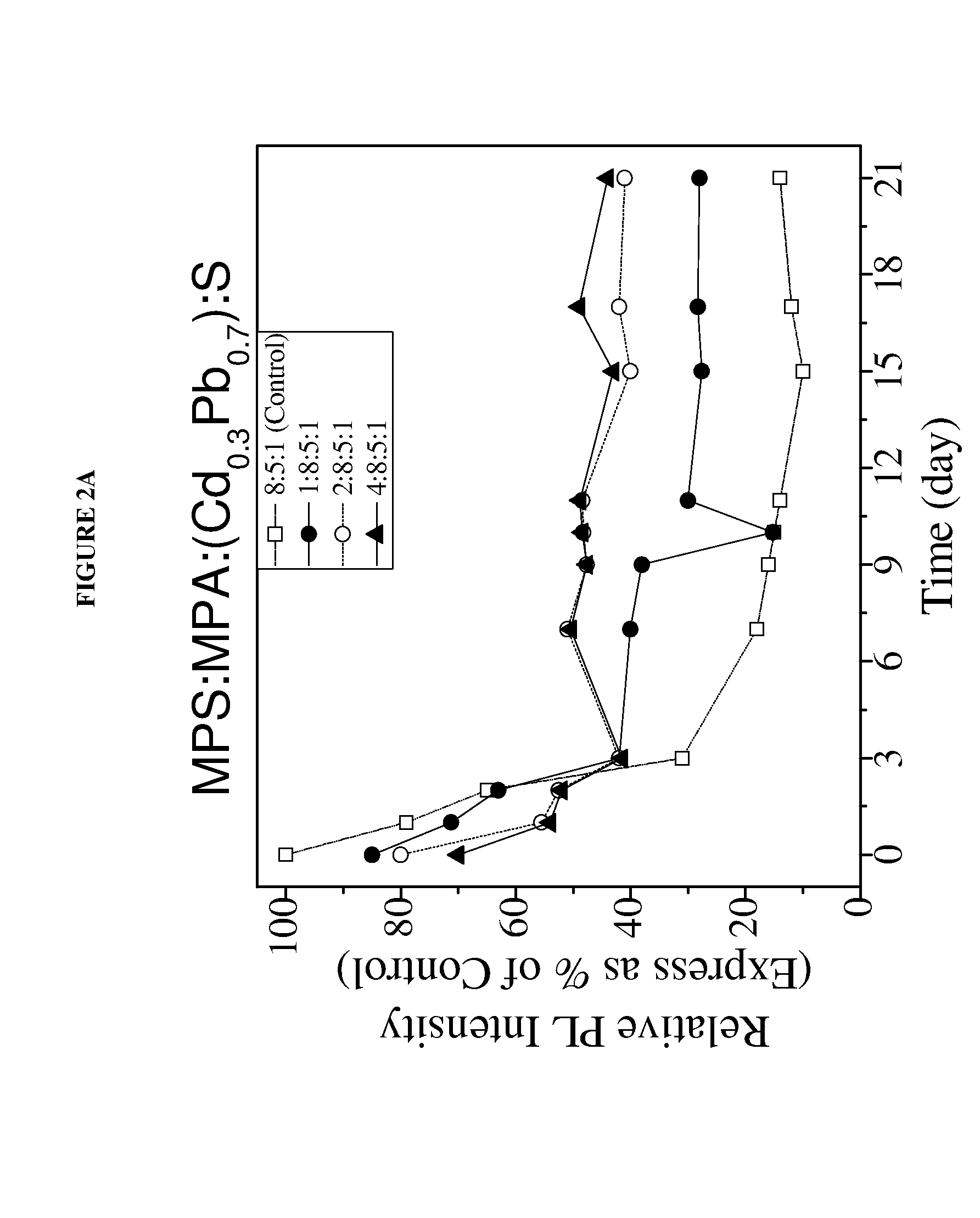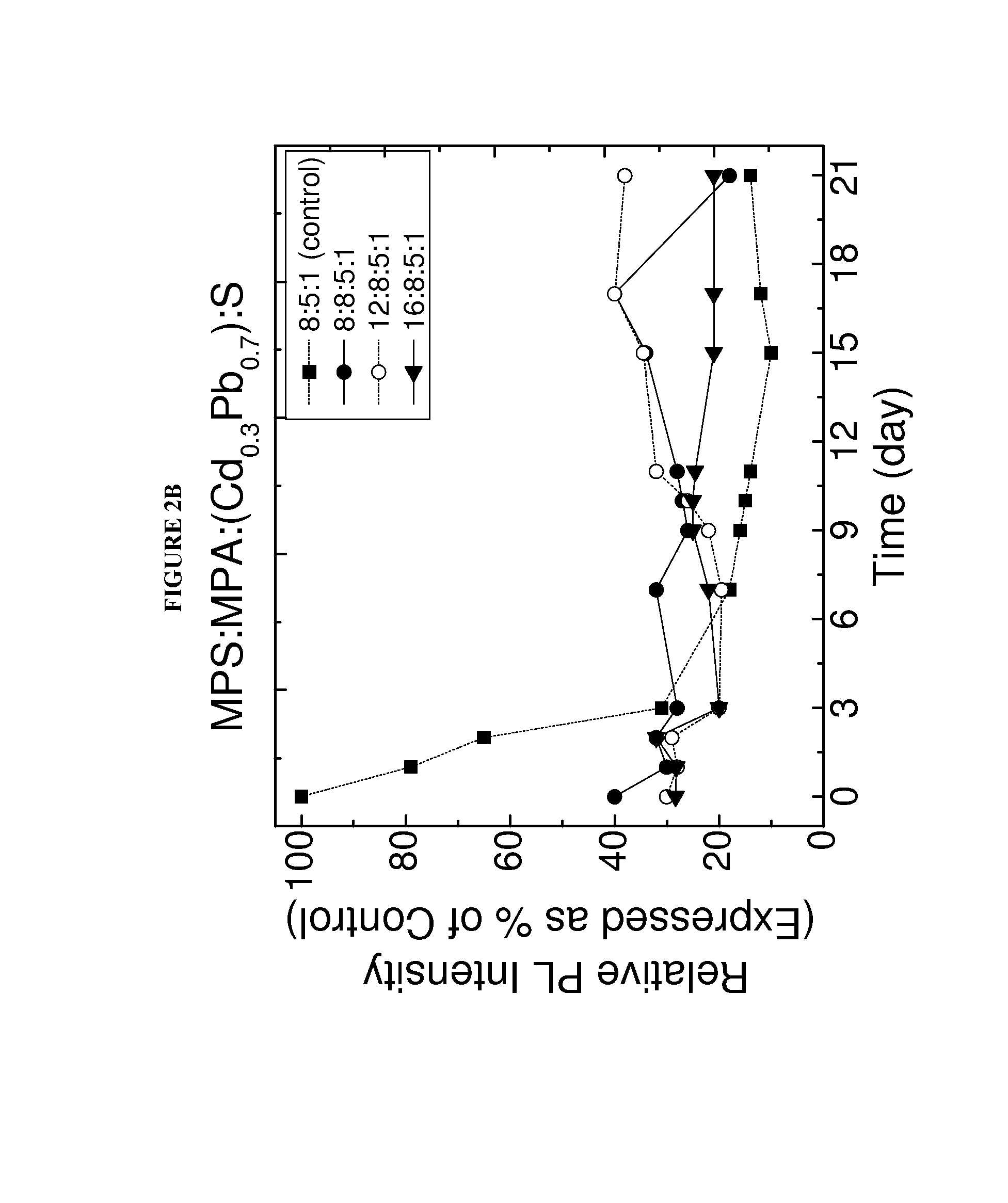Clear margin determination during cancer surgery
a cancer and surgical technique, applied in the field of specific moieties of biomarkers, can solve the problems of no reliable intraoperative margin assessment method, surgical procedures, additional cost, time and pain for patients,
- Summary
- Abstract
- Description
- Claims
- Application Information
AI Technical Summary
Benefits of technology
Problems solved by technology
Method used
Image
Examples
example i
[0063]Aqueous CdSe QDs conjugated with anti-Tn and antibodies anti-VEGF antibodies were used to image HT-29 colon cancer cells in the margin of excised tissue samples. An aqueous solution of the conjugated QDs was applied to pathological excised tissue sample slides containing tumor masses. The intensity of the photoluminescence was measured to determine if cancer cells were present on the surface of or embedded within the tissue margins.
[0064]In this study, breast tissue sections were obtained from multiple patients. Each breast tissue section was divided into three regions: tumor mass, normal surrounding tissue and margin area in which the tissue contained both tumor and normal tissue. Within each region, multiple blocks were cut by pathologists. For each patient sample, two blocks from six margin areas containing tumor mass and normal tissue were examined. The sample tissue blocks were embedded in paraffin, cut to a thickness of about 5 μm and subsequently mounted on glass slides...
example ii
Antibody Conjugated MPS replaced MPA Capped Cd0.3Pb0.7S Quantum Dots
[0076]In this study MPS replaced MPA capped Cd0.3Pb0.7S QDs of the present invention were synthesized. To optimize photoluminescent intensity, the CdPbS QD was synthesized to have an MPA:cation:anion molar ratio of about 8:5:1. The synthesized Cd0.3Pb0.7S QD having a 8:5:1 MPA:[excess Cd+(Cd1-xPbx)]:S molar ratio was stable for a sufficient period of time to enable the detection of cancer cells within the sample excised tissues. To further improve the stability of the QD, some of the MPA capping molecules were replaced with MPS capping molecules. FIG. 2 shows various MPS replaced MPA capped Cd0.3Pb0.7S. These QDs were made by reacting a predetermined number of moles of MPS (as indicated by the first of the four numbers) to the 8:5:1 MPA capped Cd0.3Pb0.7S QDs. The MPS replaced QDs were found to remain stable for at least 20 days, maintaining a photoluminescent intensity of at 50% of the initial photoluminescent inte...
example iii
Cancer Detection Study Using Biotinylated Antibody Conjugated to MPS Replaced MPA Capped CdSe QDs Using SMCC and SA
[0079]Biotinylated antibodies were conjugated to MPS replaced MPA capped CdSe QDs having an 8:5:1 molar ratio of MPA:Cd:Se using the conjugation linkers, sulfosuccinimidyl 4[N-maleimidomethyl]cyclohexane-1-carboxylate (SMCC) and streptavidin (SA) to form a biotin-streptavidin conjugation scheme. The conjugated QDs were used to detect the presence of cancer cells within the margins of breast tissue excised from breast cancer patients.
[0080]SMCC and SA were used to bind biotinylated antibodies to the MPS replaced MPA capped CdSe QDs in a biotin-streptavidin conjugation scheme. SMCC was bound to MPS replaced MPA capped CdPbS QDs and was also bound to SA, which in turn was bound to a biotinylated antibody. SMCC was allowed to react with the QD at a pH of about 7 for an initial period of about 45 minutes at about room temperature. Excess SMCC was then removed from the soluti...
PUM
| Property | Measurement | Unit |
|---|---|---|
| excitation wavelength | aaaaa | aaaaa |
| excitation wavelengths | aaaaa | aaaaa |
| excitation wavelengths | aaaaa | aaaaa |
Abstract
Description
Claims
Application Information
 Login to View More
Login to View More - R&D
- Intellectual Property
- Life Sciences
- Materials
- Tech Scout
- Unparalleled Data Quality
- Higher Quality Content
- 60% Fewer Hallucinations
Browse by: Latest US Patents, China's latest patents, Technical Efficacy Thesaurus, Application Domain, Technology Topic, Popular Technical Reports.
© 2025 PatSnap. All rights reserved.Legal|Privacy policy|Modern Slavery Act Transparency Statement|Sitemap|About US| Contact US: help@patsnap.com



